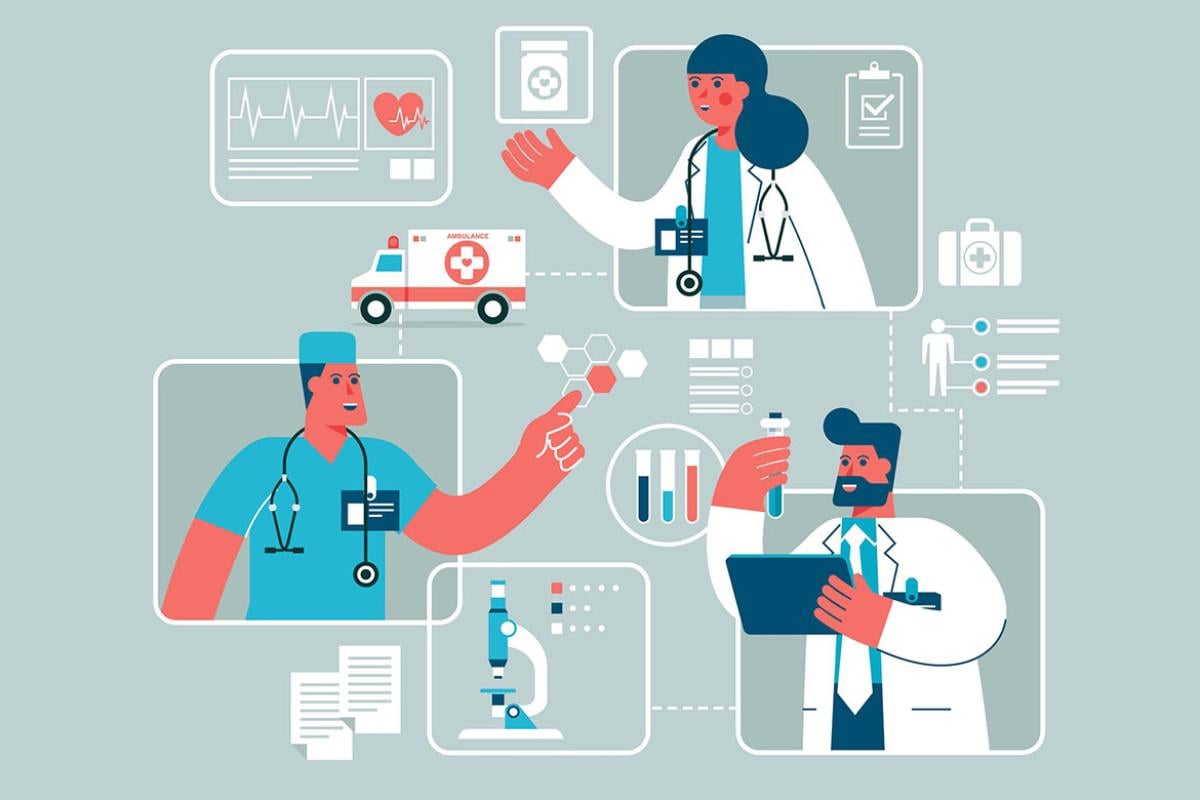Step 4: Testing & diagnosis
A lack of a clear protocol for testing, compounded by an overwhelming demand for care, causes staff roles to blur and leaves the bulk of the workflow on the clinician’s shoulders, including obtaining consent, disclosing results, counseling and coordinating follow-up care.
Some clinicians and staff may also feel intimidated by interpreting results and next steps for the inconclusive test results. For LTBI, the interpretation of the IGRA can often be difficult for clinicians who do not specialize in infectious disease. For HIV, clinicians are often unaware what the next step is upon a positive diagnosis. Providing education on the latest evidence-based guidance for screening, testing and treatment can instill confidence in the care team and provide a more personal approach to address the patient’s needs.
Additionally, many STI screenings clinics have merged into one model with family planning clinics or general community health centers. This has resulted in staff shortages and community health center care team members taking on multiple responsibilities beyond their core roles. Employing task shifting techniques, defining a routine testing plan streamlined by EHR support, outlining a clear post-test protocol and clarifying team member roles can help incorporate routine screening (PDF) more seamlessly into standard workflows.
Critical considerations at this stage
- Screening guideline ambiguity and the need for clarity for all test result scenarios and who to notify and when to notify them
- Health care professional discomfort with screening and diagnosis for LTBI: fear of transmission (latent vs. active TB); confusion about screening guidelines and what tests to use, how to treat (historically, this used to be the responsibility of the local public health agency)
- Education on interpreting results and next steps for inconclusive/indeterminate results
- Staffing shortages due to financial limitations and consolidation of clinics
- Lack of space to ensure patient privacy
- Lack of on-site equipment and reliance on external labs
- Desire from patients to know results right away is at odds with testing logistics and can lead to loss of contact with the patient before results are complete
- Pressure to meet other funder-driven requirements in addition to patient’s chief reason for visit
- Knowledge and awareness of the appropriate CPT codes
- STD tests sometimes run into insurance denials based on diagnostic codes
Strategies you can implement
- 1. Streamline the testing cascade
Optimizing the clinical workflow can help to streamline testing, clarify roles and ensure clinic staff know what happens at each step along the way. Also, leveraging testing innovations like rapid antibody test technologies or Reflex RNA for HCV allows for faster detection through the ability to immediately run another lab test on the same blood draw so that patients do not have to return for additional testing, allows for quicker delivery of results to patients. Clear guidance on testing interpretation and result sharing, in accordance with applicable privacy laws, will help reduce the cognitive load for health care professionals who are juggling a positive diagnosis with other immediate clinical needs. Strong relationships with local health departments (in particular, disease surveillance units) can also enable clinical staff members to rapidly identify which patients are experiencing a diagnosis for the first time, or who need reengagement in medical care.
Related resources
Clinical algorithm flowcharts for screening: This set of documents translates screening guidance and clinical considerations from the USPSTF and CDC into a decision tree format to help outline steps in the testing continuum from beginning to end.
- Clinical algorithm flowchart for HIV screening (PDF)
- Clinical algorithm flowchart for Chlamydia and Gonorrhea screening (PDF)
- Clinical algorithm flowchart for Syphilis screening (PDF)
- Clinical algorithm flowchart for HBV screening (PDF)
- Clinical algorithm flowchart for HCV screening (PDF)
- Clinical algorithm flowchart for LTBI screening (PDF)
Streamlined testing cascade: This set of infographics outlines the testing cascade for infectious diseases covered in this toolkit, including opportunities to optimize, and can be used as a tool to help clarify care team member roles at each step as well as define a clear post-test protocol:
- Streamlined testing cascade for HIV (PDF)
- Streamlined testing cascade for STIs (PDF)
- Streamlined testing cascade for HCV (PDF)
- Streamlined testing cascade for LTBI (PDF)
Screening guidelines from the CDC and USPSTF:
- CDC Guidelines and Recommendations: Find information on guidelines and recommendations for delivering HIV, viral hepatitis, STD, and TB care.
- USPSTF A&B Recommendations: This page outlines all of the USPSTF recommendations with a grade of either A or B including screening for HIV, chlamydia and gonorrhea, syphilis, hepatitis B, hepatitis C and latent tuberculosis infection.
- AMA STEPS Forward Plan-Do-Study-Act (PDSA): This learning module provides an overview of the PDSA approach to quality improvement in your clinic as well as a process mapping toolkit.
- Recommendations for Providing Quality STD Clinical Services: This resource from the CDC highlights the services health care settings can offer to provide the highest-quality STI care to their patients.
- Health Department directories: This resource from the CDC outlines who is working to protect the public’s health in your area, including senior health officials, state, local, and territorial health departments, and tribes and Indian organizations. Clinical staff may need to develop relationships with staff in various sections of health departments in order to facilitate reporting, linkage to care or prevention and other critical services.
- 2. Train care team members to task-shift
Shifting routine screening duties to nurses and medical assistants can answer the patient’s need for a personal approach and ensure clinical and non-clinical tasks are distributed efficiently and effectively.
Related resources
- Sharing and Shifting Tasks to Maintain Essential Healthcare During COVID-19 in Low Resource, non-US settings resource from the CDC: This resource developed by the CDC specifically for maintaining health care during COVID-19 outlines many of the basics of task shifting and task sharing that can be applied across many health care delivery situations.
- Task Shifting: Global Recommendations and Guidelines from the World Health Organization: This resource from provides recommendation and guidance from the World Health Organization on how to redistribute tasks among the health care team in order to make more efficient use of available human resources, especially in workforce shortages, in order to reach more patients with care.
- 3. Outline funding and reimbursement strategies
Breaking down direct and indirect costs for each element of routine screening and testing, across the health setting’s payer mix, will help identify gaps in funding and reimbursement and uncover opportunities for negotiation. Budgeting EHR development, equipment, the cost of tests and staff time for routine screenings will eliminate unknowns and inspire confidence. Additionally, ensuring you are coding services properly for eligible patients will ensure you are reimbursed for the cost of the service and that the patient will not have any out-of-pocket costs.
Related resources
- Routine screening coding quick guide: This coding guide outlines a list of procedural codes related to HIV, STI, viral hepatitis and tuberculosis screening for both private payer insurance and Medicare and helps you ensure that you are coding services correctly for eligible patient populations to cover the cost of the service, with the patient having no cost-sharing responsibility.
- Potential resources to cover direct and indirect costs: The following links are listings of available funding opportunities that could help to cover screening related initiatives and associated costs at your clinic.
- CDC’s National Prevention Information Network–Funding Opportunities
- Rural Health Information Hub–HIV and AIDS Funding Opportunities
- Grant funding through your state and local health department
- Overview of Cost, Reimbursement, and Cost-Effectiveness Considerations for Hepatitis C Treatment Regimens: This webpage outlines the cost-effectiveness of HCV treatment and care with a section specifically dedicated to the cost effectiveness of screening for HCV.
Related videos
Streamline the testing cascade
Lesley Miller, MD, describes how the Grady Liver Clinic uses their EHR system to streamline testing and follow-up
Download the Community Health Center toolkit
Next steps
The HIV, STIs, Viral Hepatitis and LTBI Routine Screening Toolkit is organized across the screening continuum and offers helpful resources and best practices for the care team.
Disclaimer: This page contains resources supplied by third party organizations. Inclusion of these materials on this page does not imply endorsement of these resources or corresponding organization.









